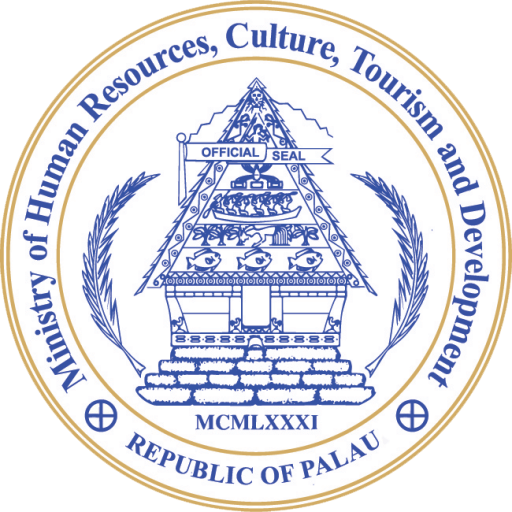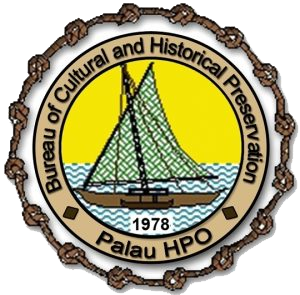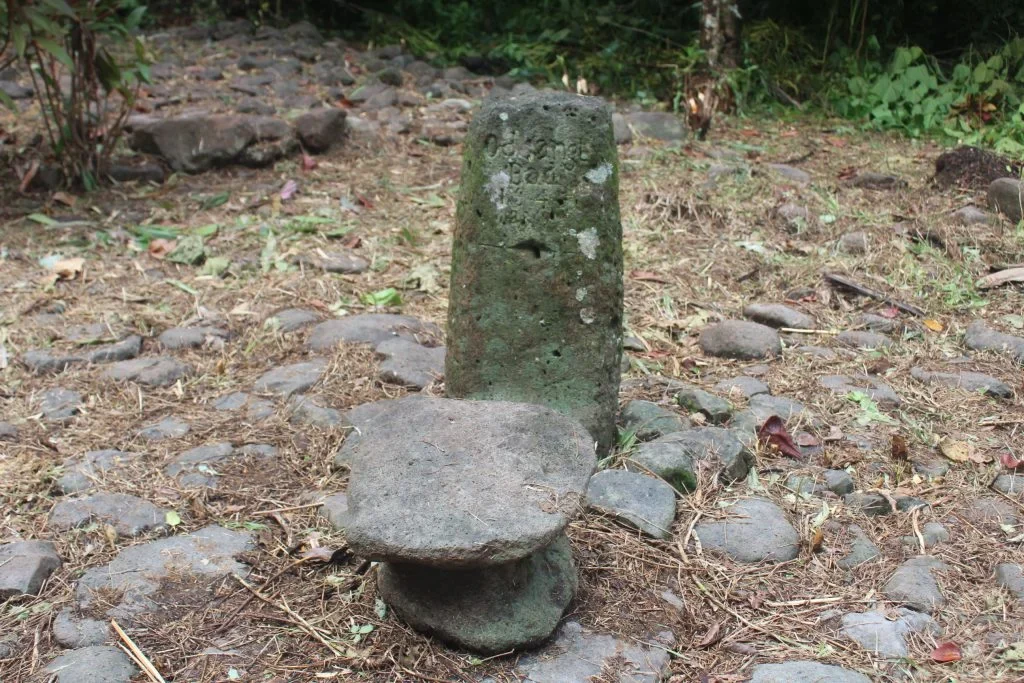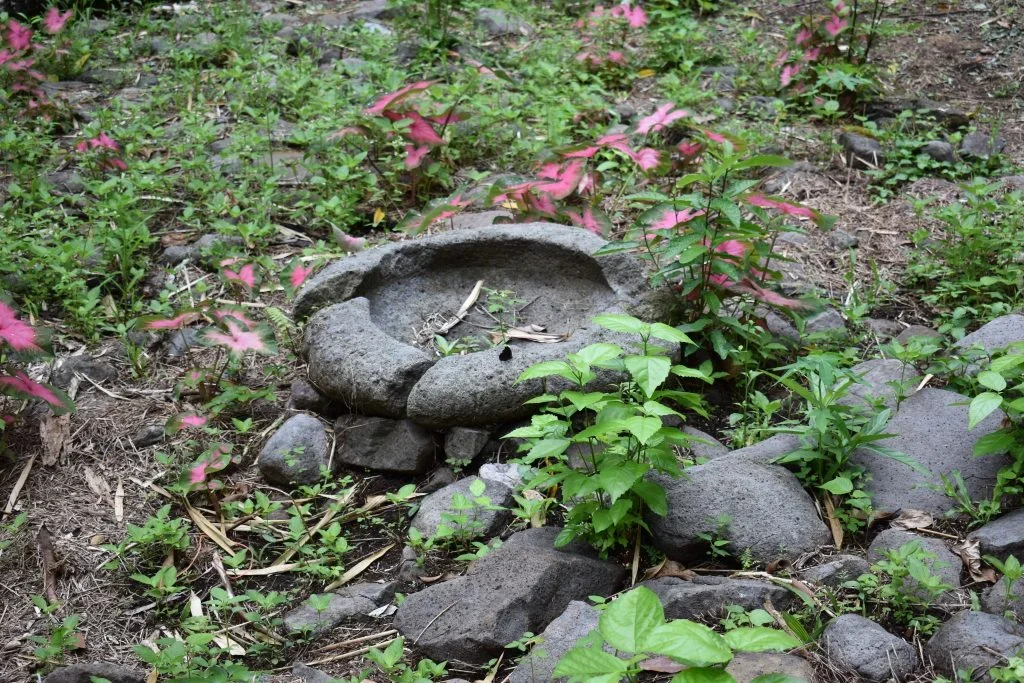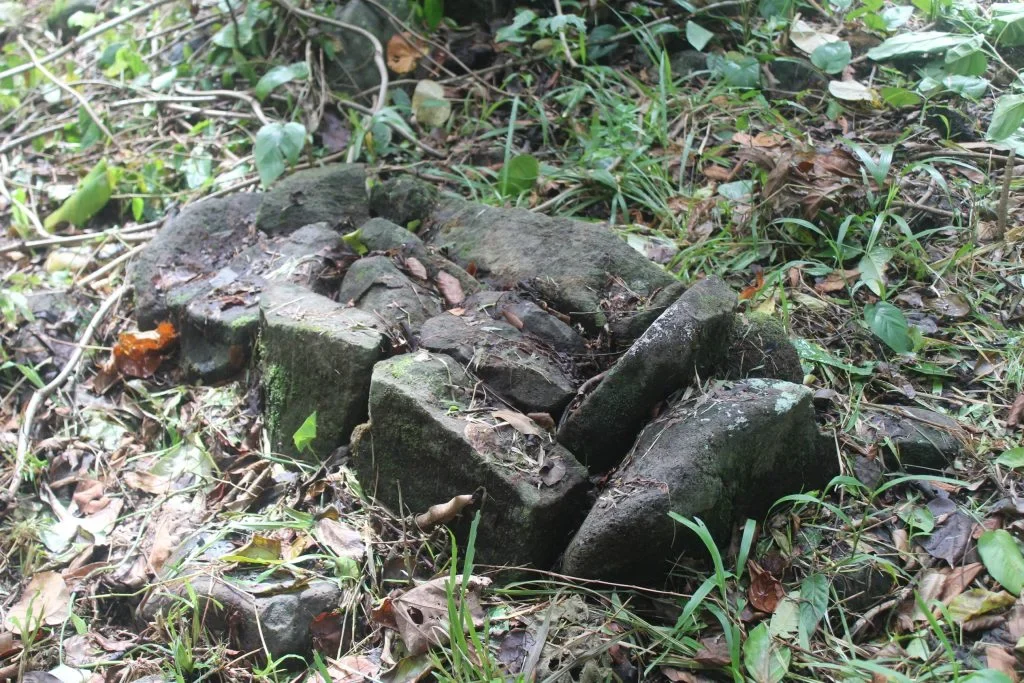Photo by McMichael Mutok Jr. (March 2021)
Bai er a Ngeruau
Me a Chelsel a Beluu er a Ngebuked
- Ngaraard
Site Type
Date Registered
Site No
Restored
In recognition of its significance, this site has been listed on the Palau Register of Historic Places on June 02, 1993. Through preservation, study, and interpretation, the site can serve to educate future generations concerning the historical and cultural heritage of the Palauan people.
The entire site is approximately 500 x 1,200 meters, with the Bai er a Ngeruau composing around 24 x 59.80 meters. The site contains stone platforms, stone paths, monoliths, grave sites, human remains, and various glass, ceramics and metal relics.
History
By the wealth of its design, the Bai er a Ngeruau is an example of a community’s desire to create a collaborative structure, both in terms of cooperation and resourcefulness. Each community member contributed to its design; some bringing stones from nearby streams and rivers, while others carved local lumber with clam shells. Pride in local materials adds to the importance of this monument. The stones are the originals ones, most of them still in their proper place. Community leadership and a traditional respect to follow authority were also instrumental in creating this structure. There were two Bai in this area; the larger of the two used only by 10 chief rubaks of Ngebuked (at one time the number of rubaks was seven). Community decisions were discussed here. The other bai was used for meetings, feasts, and social gatherings. In addition, stone platforms and stone paths are visible throughout the area. Each one housed the rubak’s clans: Ngerchedok, Ngerkesadel, Ngelengii, Tublai, Idung, Iechetii, Ngaremiou, Irikl, Romei er Bab, and Ruat.
Long ago, Ngebuked was considered separate from Ngaraard. The other four hamlets of Ngaraard were connected with the East Coast, while only Ngebuked was from the West Coast. To unify the state and promote stronger ties with the other states, a meeting was called, and it was decided that Maderngebuked would serve as chief spokesman of Ngaraard. Maderngebuked formed a unique relationship with Ibedul, which is still effective today.
During WWII, many people form Peleliu sought a safer environment. Each state was asked by Ibedul to house these Palauans. Only Maderngebuked extended an offer. About 3,000 people from Peleliu came. After the war, a group from Peleliu, and a group from Ngebuked, brought stones down from the hills. These people constructed a war memorial, a dedication of thanks to the people of Ngaraard for their hospitality and generosity, and to commemorate those Palauans who died in Ngaraard during the war. This memorial, Odesangel el Bad, stands within the Bai er a Ngeruau larger stone area.
Compiled by McMichael Mutok Jr.
Palau National Register of Historic Places
Bureau of Cultural and Historical Preservation
Sign up to receive the BCHP monthly newsletter.
Significance
Surech’s burial ground is located here. Surech was a beautiful woman from Ngiwal pursued and loved by Tulei, who was a man from Ngaraard. When Maderngebuked asked to see her “face” Tulei responded by literally bringing her head. The burial ground gives validity and truth to the legend. Also within the area is the grave site of Tucheliaur. He was an important warrior in Ngaraard’s history and was responsible for planning an attack on Ngiwal. Because of his craftiness, strength, and skill, Ngiwal eventually surrendered and Ngaraard won the war. Upon returning to Ngaraard, he said, “If I will die I will not sleep on the grave but will sit facing the village of Ngiwal. All my war clubs and spear will be buried beside me.” His grave faces Ngiwal.
The Bai er a Ngeruau serves to remind Palauans of the importance and greatness of Ngebuked. It is a memorial to Ngebuked’s contribution to the history and development of Ngaraard and of Palau. The architectural design and engineering of the stone platform illustrates the social cooperation of the community members, and the role of leadership and authority. The Bai er a Ngeruau holds the key to understanding the traditional heritage of this area and to restore it so future generations can learn about Ngebuked’s beginnings.
Source
Blaiyok, Kautechang. An Archaeological Survey Report of the Proposed Road Project Phase I and Land Dredging Coral Heads in Ngaraard State. Republic of Palau.
Kramer, Augustin. 1908-1910. Vol. 2: Settlements, Districts, Villages, Constitution, Demography, Anthropology, Language. Translated and Published by the Kramer Translation Committee (KETC). 2017. Pp. 50-56
Olsudong, Rita. Calvin T. Emesiochel. Errolflynn T. Kloulechad. 2000 (Draft). Inventory of Cultural and Historical Sites and Collection of Oral History in Ngaraard State. Vol. I. Pp. 120 – 133.
CODE OF CONDUCT
Given the importance of this site to Palauans in terms of their history and culture and the concerns that exist in regard to its future, those visiting the site should not engage in any type of behavior or activity that disturbs the integrity of this site or diminishes the respect that should be accorded to it.
PALAU HISTORIC PRESERVATION GUIDELINES
Because of the importance and sensitivity surrounding this and all historical registered sites, the Palau Historic Preservation Office would like emphasize proper conduct for visiting a site through the following guidelines.
1) Remember that many sites include culturally sensitive areas and therefore behavior should be always be respectful.
2) Remember to take everything you bring to the site with you when you leave.
3) Do not remove anything from the site. Although you may not think something is significant to the site, all pieces make up the whole.
Location of Bai er a Ngeruau Historic Site Ngebuked
Compiled by McMichael Mutok Jr.
Palau National Register of Historic Places
Bureau of Cultural and Historical Preservation
